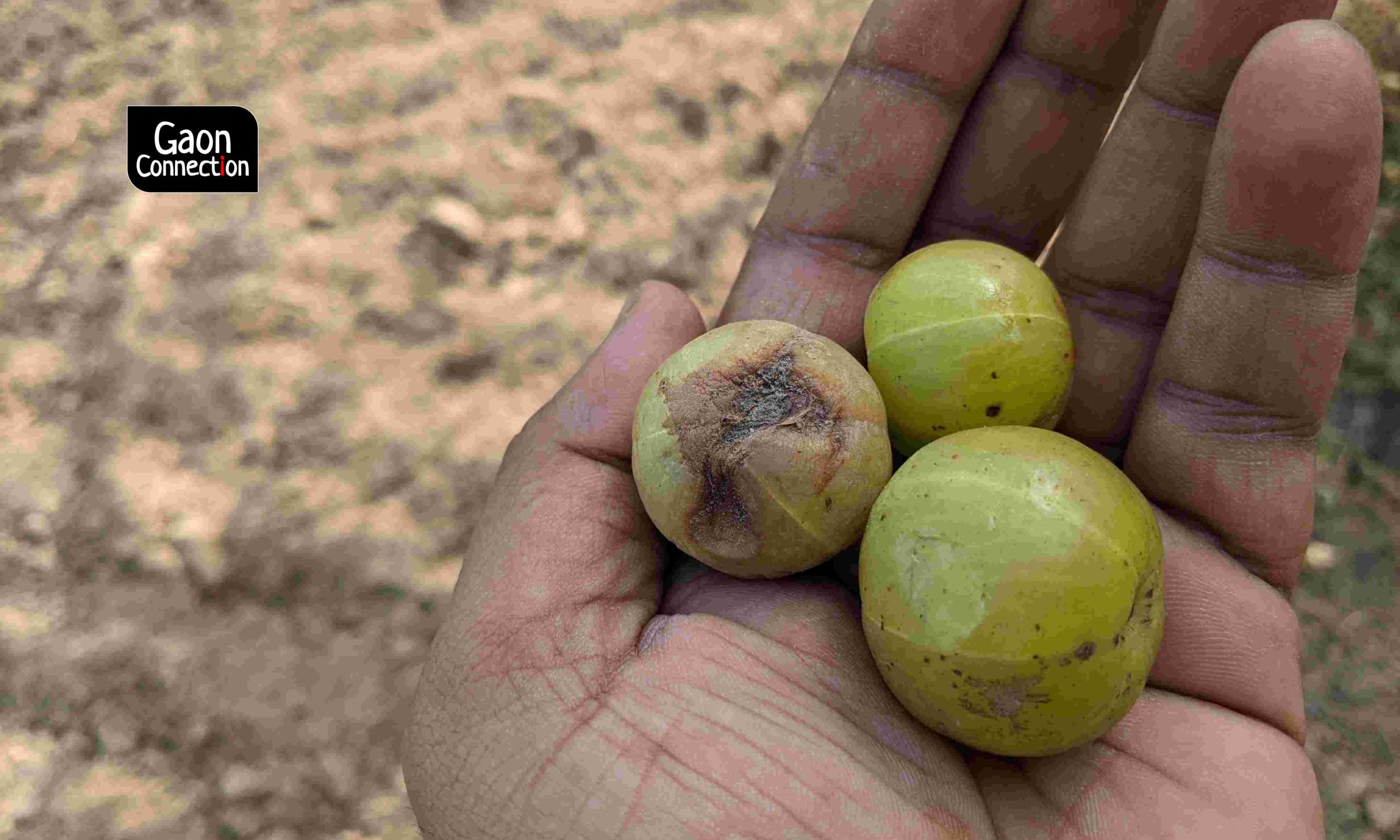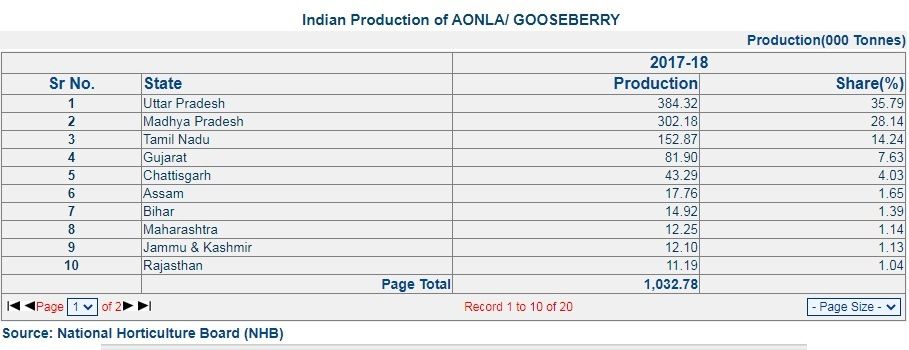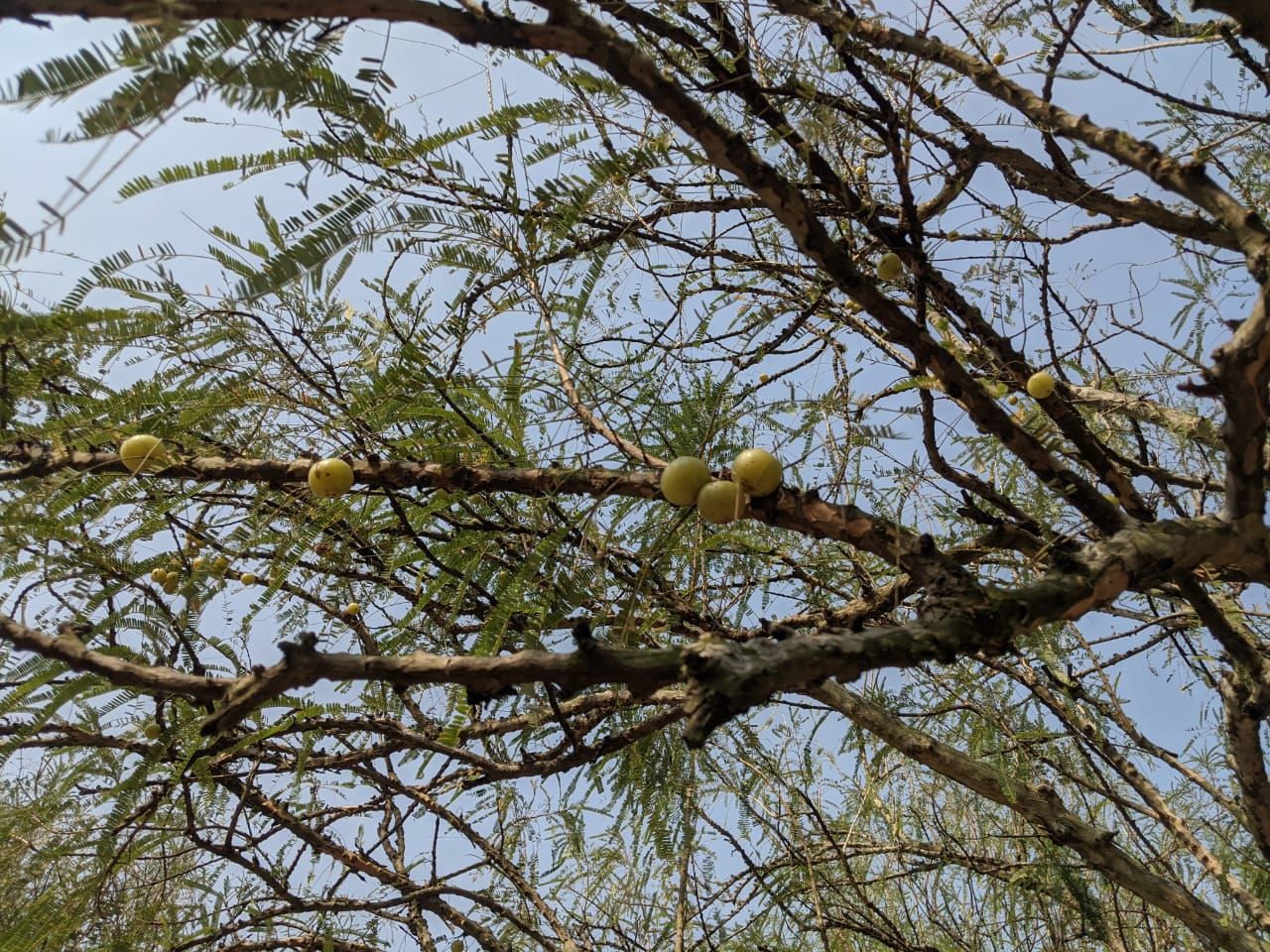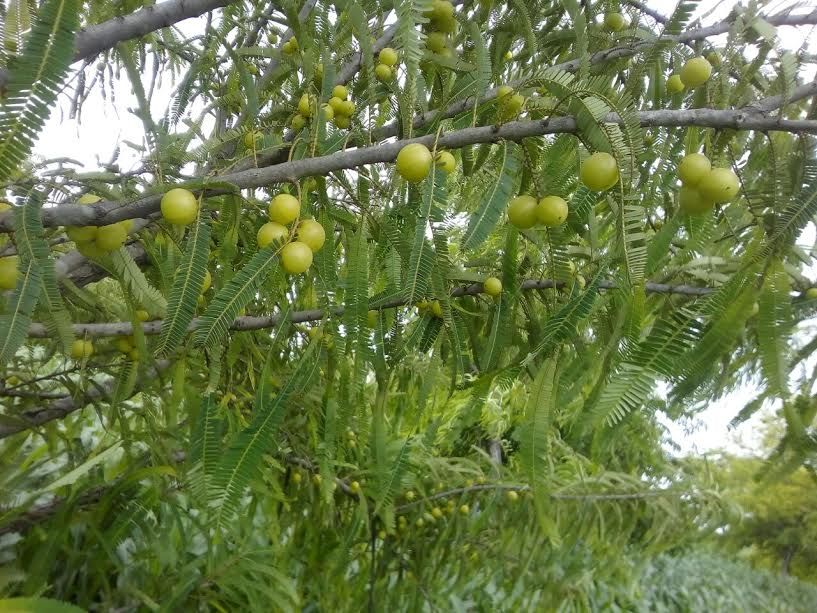The Sour Truth: Has the amla’s glory days ended in Uttar Pradesh?
Pratapgarh district, which cultivates 80% of amla in Uttar Pradesh, has witnessed a 40% reduction in the area under cultivation in the last decade. And this year, fruit rot infestation has affected the crop.


The amla farmers this year are particularly badly hit because of an infestation that manifests itself as brown spots on the fruits.
Jwala Singh of Gondey village, in Pratapgarh, Uttar Pradesh, 170-odd kilometres from state capital Lucknow, was one of the biggest cultivators of amla (Indian gooseberry) in the district. But he decided to cut down 18 bighas (4.6 hectares) of amla orchards out of his 25 bighas (6.4 hectares) and grow bananas there, instead. He is not the only one, as many farmers in the district, well known for its amla, are doing the same.
The amla farmers this year are particularly badly hit because of an infestation called fruit rot (pestalotia cruenta) that manifests itself as brown spots on the fruits, that cover the amlas and eventually cause them to drop off. Fruit rot occurs usually in the months of October and November. “Pratapgarh district has suffered 25 to 30 per cent loss in amla production this year, because of the fruit rot,” Anil Kumar Dubey, horticulture officer of the district, confirmed to Gaon Connection.
Most farmers of Godey village in Sadar block of Pratapgarh cultivate amla. “This time, there was an abundance of fruits though they were smaller than usual. Last month, the fruits began to turn dark and dropped off the trees,” Manoj Singh, a farmer who cultivates amla in approximately one hectare of land in Godey, told Gaon Connection.
Like Jwala and Manoj Singh, Rakesh Maurya is also an amla farmer in Godey village in Pratapgarh district. Besides cultivating amla, he is a trader as well, and buys the produce from other amla farmers and trades in them.

Usually, as soon as the amla trees start bearing fruits, traders like Maurya, pay the farmers some advance for their entire orchard’s produce and also take care of the orchards right up to the harvesting and selling in the markets, after which they pay the farmers the balance amount.
“We bought off the produce right after the rains and it looked like it was going to be a good harvest. The trees were laden with fruit, but soon the fruits began falling off one by one” Maurya told Gaon Connection.
“We pay the farmer an advance of about seventy to eighty thousand rupees for the produce of about 100 trees,” explained Maurya. “Last year, there was not much demand for amlas and the rates were not that great either. This year, there was more demand, the rates rose, but the production turned out bad,” Maurya rued. “This year the rates went up to eight to ten rupees a kilo, while earlier we managed to get only about two to three rupees a kilo,” he said.
Because of the fruit rot, many traders did not pick the fruits and left the orchards unharvested and the farmers had to pick the rotted fruits themselves. “We won’t even be able to recover our picking cost with such produce. That is why many of us are opting to cut the trees and cultivate something else,” explained Manoj Singh.
But, fruit rot infestation isn’t the only worry of the amla farmers in Pratapgarh, which is witnessing a steady decline in area under amla cultivation.

Decline of amla
In Uttar Pradesh, amla is cultivated in Pratapgarh, Rae Bareli, Sultanpur and Jaunpur districts, out of which Pratapgarh has the highest yield. According to an official in the horticulture department of Pratapgarh, the district grows 800, 000 quintals of amla every year which is a whopping 80 per cent of the state’s amla production.
Overall, Uttar Pradesh produces 3,843,200 quintals of amla, which is 35.79 per cent of the country’s total production, as documented by The Agricultural and Processed Food Products Export Development Authority (APEDA).
While fruit rot has caused grief amidst the amla farming community this year, Pratapgarh has been seeing a steady decline in the fruit cultivation for nearly 10 years now.
According to the Department Of Horticulture, about a decade ago, 16 blocks, including Sadar, Sandwa Chandrika and Patti, in Pratapgarh district, were under amla cultivation in more than 12,000 hectares of land. This area is now down to 7,000 hectares, a decline of over 40 per cent in a decade. Farmers have preferred to raze down their orchards and grow other crops.
One reason could be the age of the amla trees that has an impact on the yield because of which the amla farmers are moving to other crops, Anil Kumar Dube, district horticulture officer, Pratapgarh, told Gaon Connection.

A better deal
“The amla tree starts bearing fruit when it is about five years old and continues to do so till it is about 25 years old,” AK Srivastav, scientist Krishi Vigyan Kendra, explained to Gaon Connection. The farmer has to prune the trees once they are 15-20 years old. Once he does this, after three years, new branches grow bearing new fruit. “But, a lot of the trees are aged, the yield has also decreased, and the farmers, instead of taking the trouble to prune the trees, often prefer to clear them altogether and grow something else,” he said, adding a lot of the amla farmers were now growing bananas on their farm.
Bananas have proved to be a more profitable alternative. “Per hectare of banana cultivation yields an earning of five to six lakh rupees for the farmer. Whereas the same one hectare of amla orchard, with approximately 150 trees, may yield about 300 quintals of fruit, which translates to an income of not more than three to three and half lakh rupees for the farmer,” explained Dubey.
Not enough support
Meanwhile, the state government did make efforts to promote amla, and included the Pratapgarh amla in the One District One Product (ODOP) initiative launched in 2018, that was supposed to promote the unique products of a region, thereby helping its farmers and the cottage industries, related to it. But ODOP did not receive an enthusiastic welcome from the amla cultivators who felt that they did not get the same kind of support that the cultivators of other produce got, out of ODOP, for instance the mango and apple producers.
“Although amla was included under ODOP, the move failed to benefit its cultivators. The government did not give amla the kind of support they extended to other crops. There was no help for the farmers at the local level,” Atendra Singh, amla farmer and president of Amla Growers Association told Gaon Connection.
“There are research centres, institutes, directorates and entire departments devoted to giving farmers information, useful tips, marketing support, etc., but amla does not have that,” he pointed out.
The ODOP benefitted the food processors more than the farmers, observed AK Srivastav of the Kisan Vigyan Kendra in Pratapgarh.
“Farmers are better able to sell mangoes and other fruits in the markets But the amla they cultivate they can only sell to the traders or the processing units,” he explained.

But, in 1991, an amla department was set up in Pratapgarh, and an amla development officer was appointed too. But in 2003, the post was done away with and the department was merged with the horticulture department.
However, this year, despite the pandemic, or perhaps because of it, the amla, fetched a better price than usual. “The price of the amla this year was between eight and ten rupees a kilo. Just a couple of years ago it was selling at a paltry two to three rupees a kilo,” said Atendra Singh.
The reason for this also could be the fact that as Rajasthan’s output was lower this year, many traders from there came to Uttar Pradesh to pick up the amlas. Besides, the demand was more during the pandemic, because amla, rich in vitamin C, is considered as an immunity builder, he said.
There are hundreds of amla processing units that make pickles, marmalade, candy, etc. at Pratapgarh. The amla products from here are sold across the country through fairs and exhibitions. But COVID-19 and the lockdown put a stop to exhibitions and fairs where they were sold, and the people involved are incurring heavy losses.
One such processing unit is Pushpanjali Gram Udyod Samiti, that falls on the Prayagraj-Faizabad route. “Usually we put up stalls across the country, and this time there has been an increase in the demand for amla too because people believe it is an immunity booster to counter the corona virus. But we are unable to meet that demand,” Chandra Prakash Shukla of the processing unit told Gaon Connection. “For a few months since March, our sales had completely stalled,” he said, but was happy that it was in the process of recovering.

